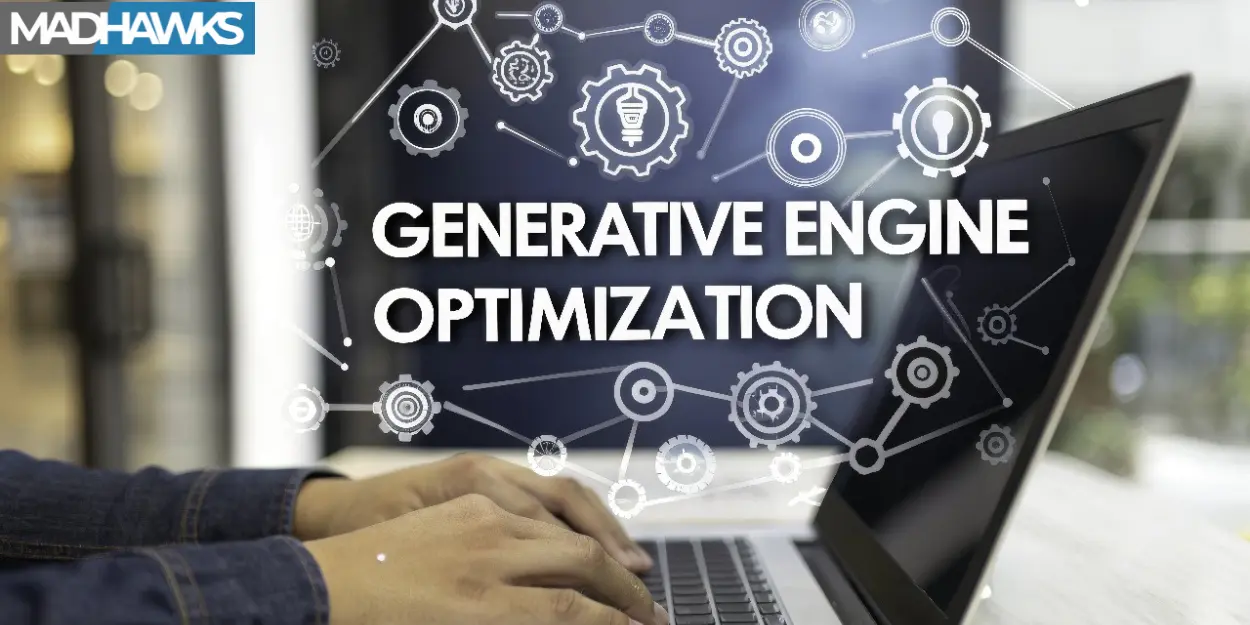Performance marketing, which many individuals consider the same thing as digital marketing, is actually a more specific term. There are various parts of digital marketing and performance marketing is a small subset of it focusing on achieving short-term goals.
The best thing about this marketing is that advertisers or brands only have to pay when a desired action is performed by the consumer. This is the major reason behind the continuously increasing popularity of performance-based marketing.
However, to make the most out of performance marketing strategies, you must understand what is performance marketing, how it works, and how you can leverage it for your business.
What is Performance Marketing?
Performance marketing is an online marketing strategy, where brands or advertisers pay a marketing company based on the results achieved. In other words, it’s a result-driven marketing strategy where marketing agencies get paid when they provide the advertiser with the desired results, such as clicks or conversions.
Performance marketing is suitable for businesses of all sizes. It gives more power to the advertiser as they can decide on an action or target and pay the marketing agency when that particular target is achieved. This target can be anything like clicks, leads, or sales. There are several reasons to use performance-based marketing to scale your business. It helps improve your brand awareness, is measurable, and has lower risk associated with it.
How Performance Marketing Works?
In order to understand how performance marketing works, you need to understand its different aspects. Let us first discuss the key groups that play a crucial role in the entire performance-based marketing landscape:
The Advertiser (The merchant or retailer): An advertiser is the brand or retailer who is looking to improve its performance.
The Publisher or Affiliate Partner: A publisher is the marketing company or partner who promotes the advertiser or through whom, the advertiser improves its performance.
The Affiliate Tracking Network: An affiliate tracking network is a third-party platform where advertisers and publishers can connect to track their performance and receive payments.
In order to make performance marketing work for a brand, all these groups have to work with good coordination and drive the required results.
How To Measure Performance Marketing?
There are KPIs (Key Performance Indicators) to measure the performance of every action taken in performance marketing.
The metric you use is specific to a particular action and helps you understand the amount of clicks, leads, or sales, you have achieved with this action. ROIs play an important role in the entire performance marketing landscape.
Some of the most important KPIs and metrics used to measure performance-based marketing are as follows:
CPA (Cost Per Acquisition) or Pay Per Sale: This is the cost that the advertiser pays the publisher every time a consumer performs a desired action that is equivalent to a sale, such as a purchase, a click, or a form completion. The success of the campaign is measured by the number of times consumers have made a purchase.
CPC (Cost Per Click) or Pay Per Click: This is the cost paid by the advertiser when consumers click on ads that take them to a desired landing page. In this case, the success of a campaign is measured by the number of clicks.
CPL (Cost Per Lead) or Pay Per Lead: This is the cost paid by the advertiser when they get information about a new potential customer who was encouraged by the publisher to fill out a form or provide this information.
CPM (Cost Per Impression) or Cost Per Mille: In this, the publisher gets paid based on the number of impressions they get on a particular ad. Usually, the advertisers are paid for every 1,000 impressions they drive.
LTV (Lifetime Value): The lifetime value is a measure of the strength of the relationship between a brand and a customer. It is an estimate of how much a customer will spend throughout their journey with a particular brand based on their recent or past activities with the brand.
Performance Marketing vs Digital Marketing
Some individuals use the terms ‘digital marketing’ and ‘Performance marketing’ interchangeably. However, there is a significant difference between the two.
Before diving deeper into the topic of performance marketing, you must know how it is different from digital marketing. Performance-based marketing can be considered a subset of digital marketing. Digital marketing is a more general term, while performance marketing deals with a particular segment under it.
While digital marketing focuses on driving long-term results for a business, performance marketing is more based on driving short-term results. Another key difference between the two is the way results are measured in the two fields.
In performance-based marketing, we have specific metrics to track and measure the performance of campaigns. On the other hand, it can be difficult to measure the performance of digital marketing as it focuses on building brand awareness, strengthening relationships with customers, etc.
Creating a Performance Marketing Strategy
Here are a few crucial steps to follow when trying to build an effective performance marketing strategy:
Identify Your Goal
Defining your goal is the first step you need to take when building a digital marketing strategy. The same goes for performance marketing as well. Before you launch a campaign, you must be very clear about your objective. It can be driving more sales, generating more leads, getting more clicks, or just general brand awareness. Identifying your goal will help you design a campaign in the right direction or find a suitable affiliate partner like MadHawks to achieve the same.
Choose The Right Publisher and Preferred Channel
The next step in the process is to choose the right partner who can help you achieve your goals. Your partner can be an experienced performance marketing company like MadHawks or just an influencer. Choose a partner based on your preferred channels. Make sure not to focus on a single channel. Diversifying the channels always proves to be a profitable strategy. Your preferred channel should depend on where most of your target audience is present. If it’s social media, partnering with influencers will be a good idea.
Generate and Assign IDs
Once you have partnered with a performance marketing company, you don’t need to worry about designing or launching the campaign as all this will be done by the publisher. You will just have to generate your unique tracking links. This is quite important because you can attribute an action to your partner only with a unique link or code. You can either do this manually or use automated tracking systems.
Top Performance Marketing Tools
Performance marketing tools can be divided into two categories: the ones that connect advertisers and publishers and the ones that measure performance. We have listed some most widely used performance-based marketing tools below:
The Partnership Tools
Partnerize: It is a simple tool with an easy-to-use interface of its dashboard. Advertisers can easily manage their partners with Partnerize. It allows you to access real-time campaign data and automate the payment process for partners.
PartnerStack: This software allows you to recruit the partners of your choice or choose from a network of active partners. PartnerStack is especially suitable for SaaS companies. It offers a custom partner partner and allows campaign tracking to measure performance.
Everflow: Everflow is another software that makes partnership management easy for advertisers. It has a simple portal that allows easy partner onboarding and management. With this, you can design a custom payout structure to pay your partners.
The Performance Tracking Tools
AnyTrack.io: With this tool, attribution reporting is much easier. You just need to assign a tag to each partner and it automatically tracks every engagement. It also allows you to integrate your custom affiliate network.
LeadDyno: This tool allows advertisers to build a successful affiliate program that aligns rewards with the desired actions. You can create unique codes, URLs, etc, and assign them to every partner using this software. LeadDyno even allows you to customize the payment structure based on your key metrics.
Impact: This is an effective tool that streamlines the entire process of partnership from the first contact to the final payout. Its universal tracking feature tracks the performance of your partners across all channels and devices.
Make Performance Marketing Work For Your Brand
As mentioned earlier, the affiliate partner or publisher you choose matters a lot when it comes to the success of your performance marketing campaigns. Once you identify your goals, you can look for partners or companies who have experience in running such campaigns or who can help you achieve your targets. MadHawks, being one of the top performance marketing companies, can be a good choice if you are looking for an experienced partner company. For any further details, contact us today!
FAQs
1.What are some examples of performance marketing?
Ans. Some common examples of performance-based marketing include PPC advertising, email marketing, affiliate marketing, influencer marketing, etc.
2. How does performance-based marketing work?
Ans. Performance marketing has three key pillars that make it work. These pillars or groups include advertisers, publishers, and affiliate tracking networks. Advertisers partner with publishers and then publishers work to achieve the desired results for them. For every desired result, advertisers pay the publishers. Talking about the third pillar i.e. affiliate tracking network, it is a third-party platform that connects publishers and advertisers.
3. Why is performance marketing important?
Ans. Performance marketing can help brands achieve short-term goals such as clicks, leads, and sales faster, which might take much more time otherwise.







